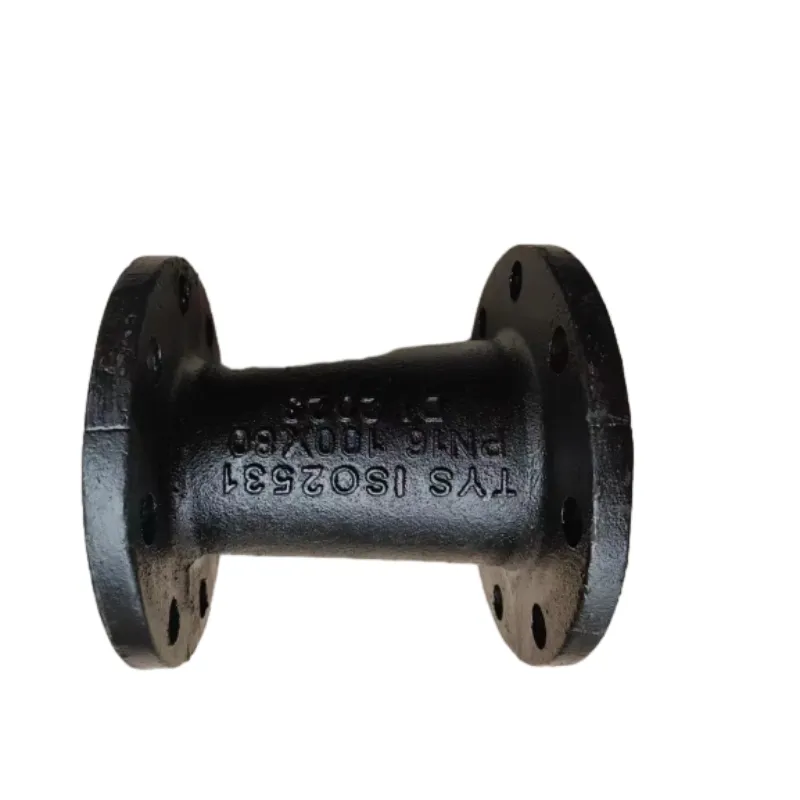24 Inch Butterfly Valve Features and Applications for Efficient Flow Control
Understanding the 24-Inch Butterfly Valve A Key Component in Fluid Control
In the world of fluid control systems, a butterfly valve stands out as a crucial component, particularly the 24-inch variant. This type of valve is widely used across various industries, including water treatment, power generation, oil and gas, and chemical processing. Understanding the function and advantages of a 24-inch butterfly valve can provide insights into its significance in both industrial and municipal applications.
What is a Butterfly Valve?
A butterfly valve is a flow control device that operates using a rotating disc to regulate the passage of fluid through a pipe. The term butterfly comes from the resemblance of the rotating disc to a butterfly's wings, which pivot around a central shaft. The simplicity of the design makes butterfly valves compact and lightweight, making them an ideal choice for large-diameter pipeline systems, such as the 24-inch variant.
Features and Specifications
The 24-inch butterfly valve is designed to manage large volumes of fluid with efficiency. Its typical construction includes durable materials such as cast iron, stainless steel, or plastic, depending on the specific application and the fluid being controlled. The valve can be operated manually or automatically, with several actuation options available, including electric, pneumatic, and hydraulic actuators.
One of the key specifications of the 24-inch butterfly valve is its pressure rating, which generally ranges from ANSI Class 150 to Class 300. This specification denotes the maximum pressure the valve can handle without compromising its structural integrity. Additionally, the valve can feature different types of seat materials—such as EPDM, PTFE, or rubber—to enhance its performance and longevity in various environmental conditions.
butterfly valve 24 inch

Advantages of Using a 24-Inch Butterfly Valve
1. Space-Efficiency Compared to other types of valves, such as gate or globe valves, the butterfly valve's compact design allows for efficient use of space. This is particularly advantageous in cramped settings, where large pipelines are necessitated; the reduced face-to-face dimension means that installation can often be completed in tighter spaces.
2. Low Torque Requirements The design of the butterfly valve allows it to operate with minimal torque, making it easier to open and close. This quality not only simplifies manual operation but also allows for faster automation with actuators, promoting higher overall efficiency in system operations.
3. Cost-Effectiveness Generally, larger butterfly valves, including the 24-inch models, tend to be less expensive than other valve types when considering both initial investment and maintenance costs. Their straightforward design lowers manufacturing costs and contributes to a lower total cost of ownership.
4. Versatile Applications The versatility of the 24-inch butterfly valve makes it suitable for various applications, from controlling water flow in municipal water treatment facilities to managing harsh chemicals in industrial environments. Their ability to provide tight sealing and high flow rates ensures they meet the requirements of diverse systems effectively.
Conclusion
The 24-inch butterfly valve is a vital component in fluid control systems, offering efficiency, cost-effectiveness, and adaptability across various industries. Its unique design and ease of operation make it ideal for managing fluid flow in large-diameter pipelines. As industries continue to demand greater efficiency and reliability, the role of butterfly valves, particularly the 24-inch model, will remain significant in ensuring optimal logistics and operational effectiveness in fluid management systems. Understanding these valves and their advantages can help engineers and decision-makers choose the right solution for their specific needs, ensuring long-term performance and reliability.
-
The Smarter Choice for Pedestrian AreasNewsJun.30,2025
-
The Gold Standard in Round Drain CoversNewsJun.30,2025
-
The Gold Standard in Manhole Cover SystemsNewsJun.30,2025
-
Superior Drainage Solutions with Premium Gully GratesNewsJun.30,2025
-
Superior Drainage Solutions for Global InfrastructureNewsJun.30,2025
-
Square Manhole Solutions for Modern InfrastructureNewsJun.30,2025
-
Premium Manhole Covers for Modern InfrastructureNewsJun.30,2025
